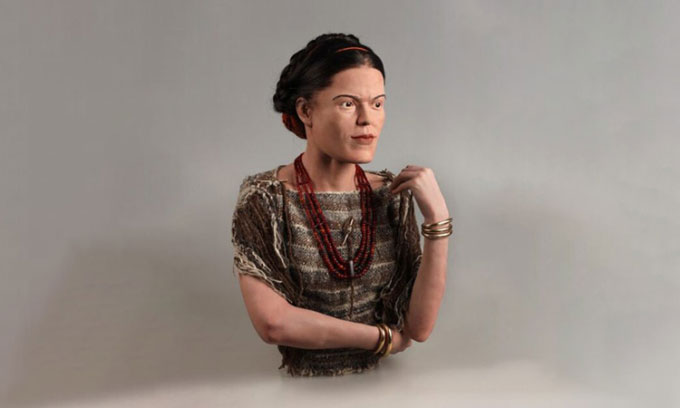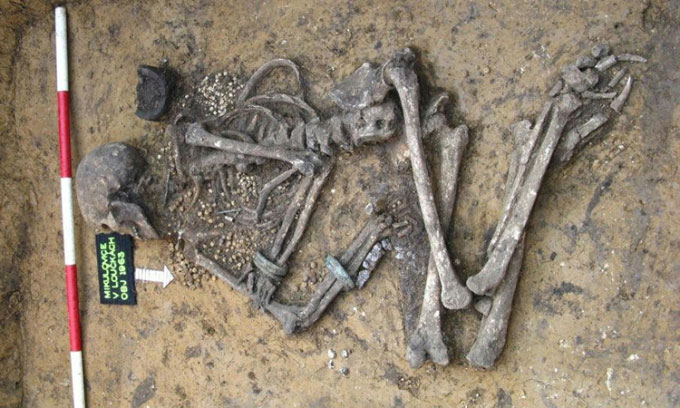Portrait of a Woman from Central Europe during the Bronze Age Reconstructed from Skull, DNA Samples, and Grave Goods.
Researchers have recreated the face of a dark-haired woman who was one of the wealthiest inhabitants of Bronze Age Bohemia, as reported by Live Science on June 13. She was buried with five bronze bracelets, two gold earrings, and a necklace made of three strands with over 400 amber beads, along with three bronze sewing needles.

Reconstructed portrait of a wealthy woman from the grave near Mikulovice, Czech Republic. (Photo: archiv MZM)
The woman belonged to the Únětice culture, a group in Central Europe during the early Bronze Age, known for their metal artifacts such as axe heads, daggers, bracelets, and twisted metal necklaces called torcs.
While her identity remains unknown, she was extremely wealthy, according to archaeologist Michal Ernée from the Archaeological Institute of the Czech Academy of Sciences. “This is likely the grave of the wealthiest woman in the entire Únětice culture region,” Ernée stated.
Radiocarbon dating of the grave that contained the woman’s remains indicates she lived around 1880 – 1750 BC. The ancient cemetery is located near the village of Mikulovice in northern Czech Republic, close to the Polish border. This area and its surroundings formed the Kingdom of Bohemia before World War I. The cemetery contains 27 graves filled with numerous artifacts, including about 900 amber items.
“We found amber in 40% of the women’s graves,” Ernée noted. In fact, the amount of amber in this cemetery exceeds the total found in all Únětic graves in Germany.

Remains of a woman from Bronze Age Bohemia. (Photo: Jarmila Švédová)
This amber may have originated from the Baltic region, indicating that the Únětice people were part of a vast trade network in ancient Europe. Among the remains discovered at the cemetery near Mikulovice, the woman adorned with amber had the most intact skull. It is a fortunate coincidence that the richest grave also contained remains well-preserved enough for reconstruction, Ernée remarked.
Another fortunate aspect is that the skeleton was well-preserved enough to contain DNA fragments from the woman. These gene sequences helped the team of experts determine that the woman had brown hair and eyes, while her skin was fair. Anthropologist Eva Vaníčková from the Moravian Museum collaborated with sculptor Ondřej Bílek to recreate the woman’s portrait.
Her clothing and accessories were also reconstructed based on scientific information. Expert Ludmila Barčáková from the Archaeological Institute of the Czech Academy of Sciences recreated the amber necklace and gold earrings, while metalsmith Radek Lukůvka recreated the bronze bracelets and needles. Kristýna Urbanová, an archaeologist specializing in textiles, designed the woman’s attire.
The researchers are also able to collect ancient DNA samples from other remains in the cemetery. Currently, they are investigating how the individuals buried here are related, Ernée stated.
The cemetery may also provide new insights into the differences between regions in Central Europe during the early Bronze Age. In nearby Bohemia, the wealthiest graves belonged to men, while women were buried with almost no adornments.
Ernée is unsure whether women in the area near Mikulovice today hold a different social status. It is possible that they actually possessed more wealth than women in neighboring regions, or that they were buried with riches solely to reflect the wealth of their male relatives.


















































